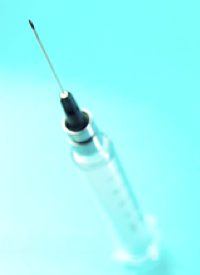
Approximately 100 million doses of vaccine should be available by mid-October, but another 20 million doses to cover all those deemed most vulnerable won’t be ready until later in the fall. The federal government has so far spent $1 billion on vaccines and has another $7 billion available for purchasing more or implementing other countermeasures.
The persons considered to be at greatest risk include all children from 6 months old to 18 years of age, women who are pregnant, adults with chronic illnesses, and healthcare workers. School-age children would be the primary target of the program though, and they may receive their shots at school in large numbers reminiscent of the polio immunizations of the 1950s.
President Barack Obama spoke at the flu summit via audio link from the Group of Eight summit in Italy. “We want to make sure that we are not promoting panic, but we are promoting vigilance and preparation,” he said, adding that “the most important thing for us to do is to make sure that state and local officials prepare now to implement a vaccination program in the fall.”
Local governments would primarily be in charge of any vaccination campaign, but Health and Human Services Secretary Kathleen Sebelius said that the federal government would provide about $260 million to states and territories to help them make plans. Another $90 million will go to hospitals to help them prepare for a possible increase in the number of flu patients.
As for the nation’s public school’s being heavily involved in vaccinations, Education Secretary Arne Duncan “would absolutely welcome” the idea. He said that schools are “natural sites” and that “to open our doors and be part of the solution really makes sense.” Thomas R. Frieden, director of the Centers for Disease Control (CDC), confirmed that schools would likely remain open and would not be urged to close unless the virus proves to be much deadlier than it is now. He told the summit participants that “our goals at the moment are fairly straightforward: reduce illness and minimize social disruption.”
These goals are commendable, but individual freedom and parental rights should also be kept in mind. Parents should be allowed to decide for themselves if their children will be immunized, and parents ought to be informed of any possible side effects or dangers. After all, 25 people died as a result of side effects from swine flu vaccinations in 1976.
It is necessary to keep things in perspective. While the CDC has reported 211 deaths related to the H1N1 flu so far this year, they are not clearly reporting how many died because the flu exacerbated an already existing condition. On the other hand, the CDC reports that influenza and pneumonia combined caused 56,326 deaths in 2006, before the H1N1 virus was a factor. Thus far, this new strain of influenza is nowhere near to claiming that many lives.



